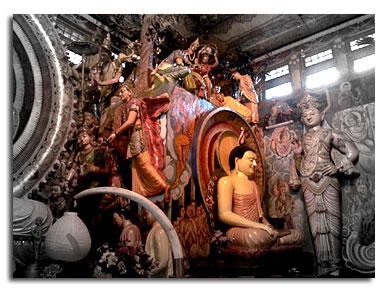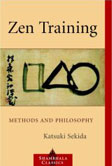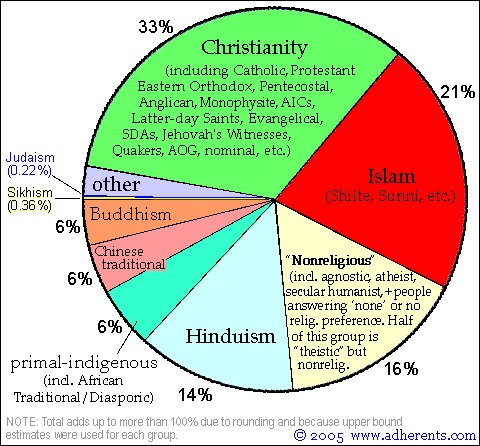Buddhism for Beginners - Kusala Bhikshu
|
||||
Daily Readings -- Buddha's Words of Wisdom — by
Ven. S. Dhammika.
This is a revised and expanded edition of 'The Seeker's
Glossary of Buddhism.' The text is a compendium of excerpts and quotations
from some 350 works by monks, nuns, professors, scholars and other
laypersons from nine different countries, in their own words or in
translation.
Buddhist Pilgrimage / 40 Color Photos + Maps — Chan Khoon San The aim of this book is to share my experience and knowledge with fellow Buddhists about the benefits of undertaking a pilgrimage to the Eight Great Places with the correct mental attitude... The idea of a pilgrimage came from the Buddha himself. Before He passed into Mahaparinibbana, the Buddha advised pious disciples to visit four places that may be for their inspiration after He was gone. They are Lumbini, where He was born; Buddhagaya, where He attained Supreme Enlightenment; Deer Park in Sarnath, where He preached the First Sermon; and Kusinara, where He passed into Mahaparinibbana. The pious disciple should visit these places and look upon them with feelings of reverence, reflecting on the particular event of the Buddha's life connected with each place. Since the Mahaparinibbana of the Buddha, these four shrines of Buddhism have become the focal points for pious disciples to rally around and seek inspiration. By the time of King Asoka, four more places, namely: Savatthi, Sankasia, Rajagaha and Vesali, that were closely associated with the Buddha and scenes of His principal miracles, were added to the pilgrimage itinerary. Together they make the Eight Great Places of pilgrimage.
The Noble Eightfold Path — by
Bhikkhu Bodhi
Women in Buddhism - Question & Answers — Ven.
Chatsumarn Kabilsingh Ph.D.
Preparing for Death & Helping the Dying — Sangye Khadro. This booklet is based on material used during a seminar that Sangye Khadro taught in Singapore and elsewhere, entitled “Preparing for Death and Helping the Dying.” This seminar answers a genuine need in today’s world, as expressed by one participant: “I am interested to know more about death and how to help dying people, but it’s very difficult to find anyone willing to talk about these things.” The material for the seminar is taken mainly from two sources: traditional Buddhist teachings, and contemporary writings in the field of caring for the dying. This booklet is meant as a brief introduction to the subject rather than a detailed explanation.
The Urban Dharma Newsletter eBook... This first Newsletter eBook is from February 2004 to May 2004. Seventeen newsletters in all, a total of 236 pages... With topics ranging from- Morality Without God, Buddhist Weddings, Ultimate Reality, and Zen Guitar, just to name a few... An easy way to keep the Urban Dharma Newsletters on you computer for reading or printing. More months to come.
- Buddhist Meditation -
Mindfulness In Plain English — Ven.
Henepola Gunaratana There are already many comprehensive books on Buddhism as a philosophy, and on the theoretical aspects of Buddhist meditation. If you are interested in that material we urge you to read those books. Many of them are excellent. This book is a 'How to.' It is written for those who actually want to meditate and especially for those who want to start now. There are very few qualified teachers of the Buddhist style of meditation in the United States of America. It is our intention to give you the basic data you need to get off to a flying start. Only those who follow the instructions given here can say whether we have succeeded or failed. Only those who actually meditate regularly and diligently can judge our effort. No book can possibly cover every problem that a meditator may run into. You will need to meet a qualified teacher eventually. In the mean time, however, these are the basic ground rules; a full understanding of these pages will take you a very long way.
The various subjects and methods of meditation expounded in the Theravada Buddhist scriptures -- the Pali Canon and its commentaries -- divide into two inter-related systems. One is called the development of serenity (samatha), the other the development of insight (vipassana). The former also goes under the name of development of concentration, the latter the development of wisdom. The practice of serenity meditation aims at developing a calm, concentrated, unified mind as a means of experiencing inner peace and as a basis for wisdom. The importance of the jhanas in the Buddhist path can readily be gauged from the frequency with which they are mentioned throughout the suttas. The jhanas figure prominently both in the Buddha's own experience and in his exhortation to disciples. In his childhood, while attending an annual ploughing festival, the future Buddha spontaneously entered the first jhana. It was the memory of this childhood incident, many years later after his futile pursuit of austerities, that revealed to him the way to enlightenment during his period of deepest despondency (M.i, 246-47). After taking his seat beneath the Bodhi tree, the Buddha entered the four jhanas immediately before directing his mind to the threefold knowledge that issued in his enlightenment (M.i.247-49). Throughout his active career the four jhanas remained "his heavenly dwelling" (D.iii,220) to which he resorted in order to live happily here and now.
Zen Training: Methods and Philosophy by Katsuki Sekida - Available @ Amazon.com" "Written by a lay teacher with 60 years of experience in zazan, this book provides everyone from absolute beginner to experienced student with detailed, progressive information and discussion on breathing, posture, distraction, actions of mind, physiology, mood, laughter, kensho, and samadhi."— Library Journal "An extraordinarily important book. It should be on the shelves of all libraries."— Choice "[Sekida's] approach is radical in its attempt to define Zen practice in terms of Western physiology and phenomenology."— New Age Journal Amazon.com Review - This is one of the best books I've read on meditation, be it Zen of other. The author, a Japanese student of Zen, collected a seres of articles published in Hawaii on the topic of Zen Meditation, and published this great book. Starting from the very, very beginning, he will teach you how to breathe, how to sit correctly for meditation, how to count breaths and many techinques needed for correct achieval of Samadhi. He will also discuss spiritual and physical issues of Zen Meditation. In all, a very instructional book on the subject. Great for beginner or advanced meditators. Amazon.com Review - The text is written by a laymen who taught high-school English and practiced/studied Zen in Japan. He later taught at several Zendos in Hawaii and in London... There are several benefits of this text. First, the writer's cultural background bridges translation problems and he focuses on accurate translation of the ideas and concepts. Second, the writer is a laymen which may help the more cynical reader be more open to different ideas. Third, he discusses the fine points of meditation technique in a semi-scientific approach that appeals to a western mechanistic paradigm--we aren't caught up in flowery, artsy-fartsy instruction which does have a place but not for many Westerners interested in the actual practice methods. Fourth, I found the author has suggestions for improving that I haven't seen anywhere else. Fifth, the text describes practice that allows the practitioner to improve the technique to adapt to their special needs which I believe is realistic and very much in-line with the original intent of Siddartha--this is to help free the practitioner from the small inaccuracies always found in a mechanistic approach.
(Introduction) May I be... May my teachers and all teachers of the Truth be... May my parents, brothers and sisters, friends and relatives be... From the highest realm of existence to the lowest, may all beings arisen in these realms, with form and without, with perception and without, with consciousness and without, may they be... (Repeat below after each introduction.) ...happy,
peaceful and free from suffering. May I/they also have patience, courage, understanding, and determination, to meet and overcome, the inevitable difficulties, problems, and failures in life.
* More Free eBooks can be found at: www.BuddhaBooks.info
--- --- --- --- ---
from -- www.adherents.com
--- --- --- --- --- |
Class # 2 / 12-5-2007 -- Download MP3 File -- 23.1 MB
Class # 3 / 12-12-2007 -- Download MP3 File -- 21.7 MB
--- --- --- --- ---
|

 Ven.
Kusala Bhikshu (Thich Tam-Thien) is an American
born Bhikshu (monk) ordained in the Zen Tradition of Vietnam. --
Ven.
Kusala Bhikshu (Thich Tam-Thien) is an American
born Bhikshu (monk) ordained in the Zen Tradition of Vietnam. -- 

